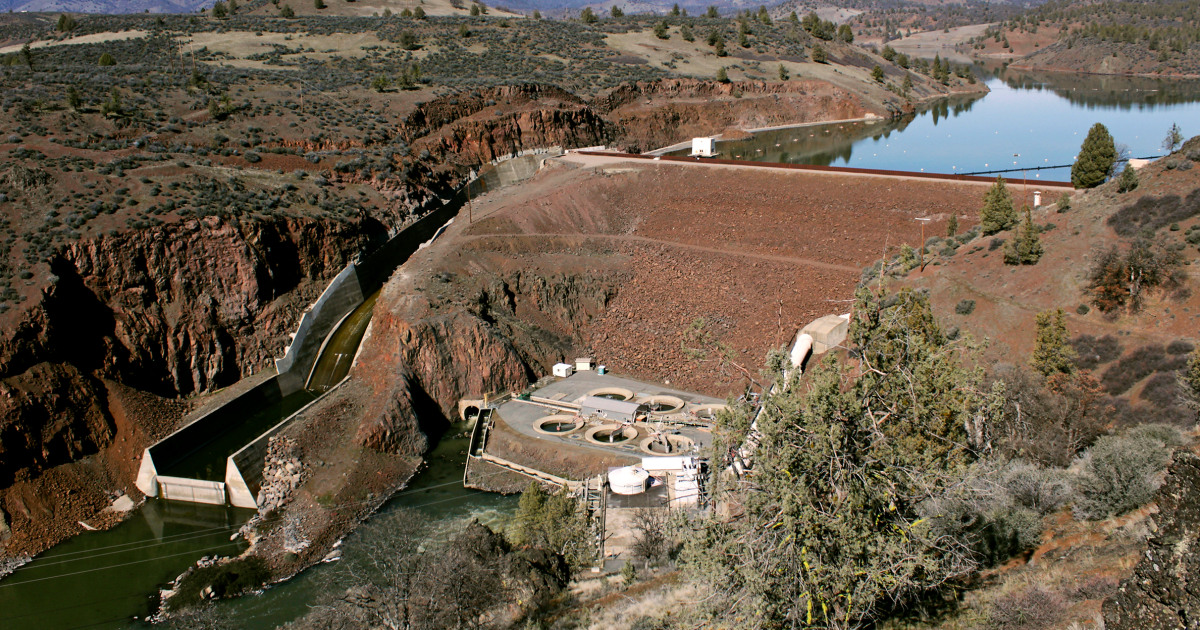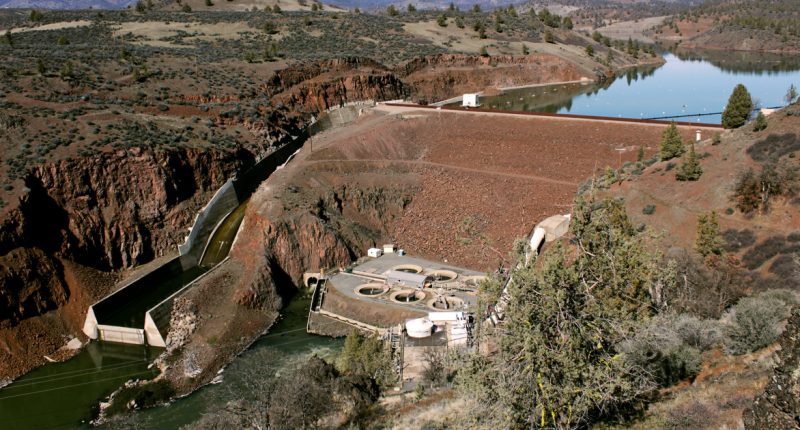
In the age of extreme heat, record-setting drought and catastrophic flooding linked to climate change, there’s been a national push to “rewild,” a movement rooted in restoring nature to the state it was before human intervention, hoping this helps mitigate the effects of climate change.
A big part of that effort is centered around dams, many of which were originally constructed when infrastructural development took priority over environmental protection.
“One of the fastest ways to heal a river is to remove a dam,” Ann Willis, the California regional director for American Rivers, a nonprofit focused on protecting clean water, said. “The good news is, when you have the opportunity to unjam a river, the river can start to restore itself almost from the moment that the water starts flowing again.”
The U.S. Army Corps of Engineers, the governing body responsible for maintaining the National Inventory of Dams, has flagged 76% of existing U.S. dams as having “high hazard potential,” a FEMA designation “for any dam whose failure or mis-operation will cause loss of human life and significant property destruction.” In the case of the Iron Gate Dam, Willis pointed out the green growth floating on the stagnant reservoir’s surface: toxic algae in what is supposed to be a water supply source. And because of aged-out infrastructure, some dams can put people in danger of catastrophic flooding, as more extreme climate events become more common.
Advocates, largely driven by tribal activists along the Klamath River, have been pushing for these dams to be decommissioned for more than 20 years and have pointed out the potential determinants from the start — notably, the near extinction of the salmon in the river has forced an elimination of the Karuk, Yurok and Hoopa tribes’ sacred practice of salmon ceremonies.
“Tribal input wasn’t sought,” said Barry McCovey Jr., the director of the Yurok Tribe Fisheries Department. “If we had input, we would have said, ‘No, this isn’t a good idea, you can’t cut a river in half with the dam. You can’t stop fish from migrating. It’s going to throw the ecosystem out of balance. You’re going to see a cascade of effects that’s going to last for generations.’”
McCovey expressed excitement now that the removal has finally begun, calling it “the biggest single restorative action that we can take to start to bring balance back to the ecosystem.” He warned that it could take considerable time to see the impacts.
“But that’s OK. We’re in this for the long run,” he said.
The massive project does come with a cost for local communities: $500 million paid for by taxpayers and those who contract with PacifiCorps, the local electric power company. Some homeowners expressed concern about decreased property values, now that their homes will no longer be on the waterfront. The Siskiyou County Water Users Association, which has been fighting the project for about a decade, filed a federal lawsuit to no avail.
The Renewal Corporation, environmentalists and the tribes argue that the cost is worth to restore nature to its roots and they point to the success of the Elwha Dam Removal project on the Olympic Peninsula in Washington state in 2011. That project restored the river’s natural flow, which enabled salmon to return almost immediately, and rebuilt a beach and lagoon that had been deprived of sediment for decades.
Advocates across the country hope to add the Klamath River as another success as they look ahead to even larger projects — like the current $33.5 billion federal proposal to breach four dams on the lower Snake River in eastern Washington.
Source: | This article originally belongs to Nbcnews.com










